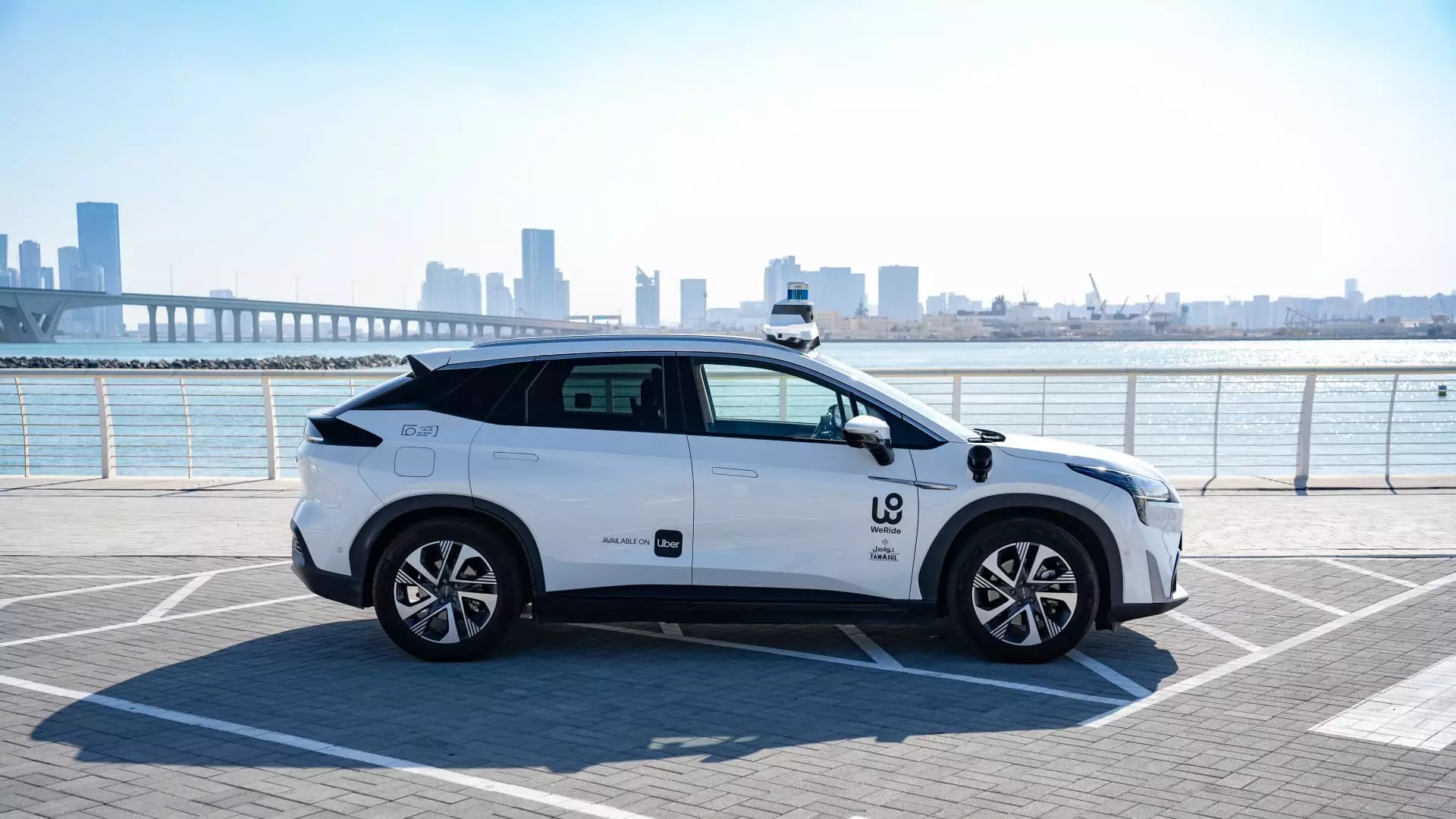In a significant move towards advancing autonomous transportation, Uber has announced a partnership with WeRide, a leading Chinese self-driving vehicle developer, to introduce robotaxi services in Abu Dhabi. This collaboration aims to bring a new form of mobility to the United Arab Emirates (UAE), beginning with pilot programs that will integrate human drivers into the initial phases of operation. This step marks a crucial transition as Uber forges ahead in the autonomous vehicle landscape, enhancing its service offerings and expanding its global reach.
As part of their pilot, Uber’s robotaxi service will initially feature human drivers in each vehicle to ensure passenger safety and reliability. This cautious approach reflects an understanding of the complex dynamics of public acceptance of autonomous technologies. These robotaxis will primarily operate between Saadiyat Island and Yas Island, including routes to and from Zayed International Airport. By strategically selecting these routes, Uber is positioning itself to capture a high-traffic area, effectively testing the waters for broader adoption in urban settings.
Uber and WeRide plan to advance to a fully driverless operation by 2025, indicating a bold vision for the future of urban mobility. Executing this transition will require robust infrastructure, ongoing technological advancements, and a comprehensive approach to regulatory compliance. The timeline suggests that both companies are confident in their technological capabilities and are committed to overcoming the hurdles associated with deploying unmanned vehicles in urban environments.
Uber’s strategy is not without its challenges. Industry analysts are wary of the potential risks presented by autonomous vehicles to Uber’s core business model. While the company currently facilitates a significant volume of autonomous rides in the United States, competition is heating up, particularly from firms like Waymo, which is both a partner and a rival in this domain. Analysts, such as James Cordwell from Redburn Atlantic, point out that while the opportunities provided by autonomous technology are vast, they also come with inherent uncertainties that could disrupt Uber’s existing operations.
Despite the potential pitfalls, the integration of autonomous vehicles into Uber’s operations could serve as a significant growth driver. As the landscape of urban mobility shifts, the demand for innovative and efficient transport solutions will likely increase, providing ample opportunities for Uber to solidify its position as a marketplace aggregator. Uber’s proactive approach in establishing partnerships with various autonomous vehicle providers is a strategic move that could yield substantial dividends in the long term.
As Uber embarks on this partnership with WeRide, it is poised at the intersection of opportunity and risk. Their bold ambitions for autonomous travel in Abu Dhabi could redefine personal transportation, but the road ahead necessitates careful navigation through technological, regulatory, and market challenges. The coming years will be crucial in determining whether this venture will lead to sustainable growth and maintain Uber’s competitive edge in a rapidly evolving marketplace.

